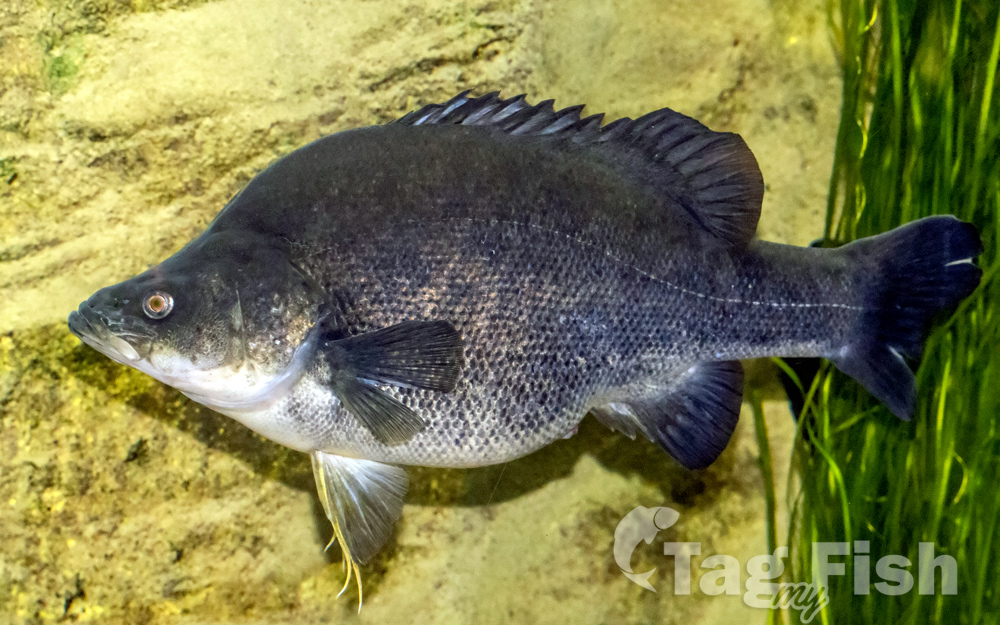Golden perch
(Macquaria ambigua)

General data
The golden perch (Macquaria ambigua) is a medium-sized, yellow or gold-coloured Australian freshwater fish species found primarily in the Murray-Darling River system, though a subspecies is found in the Lake Eyre-Cooper Creek system, and another subspecies, suspected to be ancestral to all other populations, is found in the Fitzroy River system in Queensland. Golden perch are not a true perch of the genus Perca, but a member of the Percichthyidae (temperate perches) family.
This relatively widespread and widely stocked species is an important angling fish in Australia.
Other common names for golden perch are goldens, yellowbelly, and callop, the last generally used only in South Australia.
Description
Golden perch are medium-sized fish, commonly 30–40 cm and 1–2 kg in rivers. Fish from rivers are smaller and somewhat streamlined — fish in man-made impoundments are much deeper-bodied and show much greater average and maximum sizes. In rivers, has been recorded to 9 kg, in impoundments to 15 kg. A 24-kg fish caught from Kow Swamp, Victoria in the early 1900s, and labelled and sold as a Murray perch, is often referred to as the largest recorded golden perch, but this record is doubtful — this record grossly exceeds all other size records for golden perch, and the specimen in question is far more likely to have been a Murray cod (Maccullochella peelii), which grow to far larger sizes than golden perch.
Golden perch have an elongated, deep but laterally compressed body, with a sizable mouth, small to moderate-sized eyes, a distinct curve to the forehead, and a distinct hump above the head. The opercula or gill covers possess a small, flat spine sharp enough to cut unwary fishermen\\\'s fingers. The caudal fin, soft dorsal fin, and anal fin are rounded. The spiny dorsal fin is short to moderate in length and strong. Golden perch vary from in colour from pale silvery-gold (turbid waters) to deep yellow/gold or bronze-black (very clear waters).











